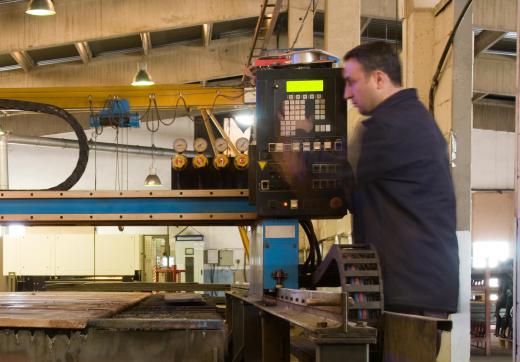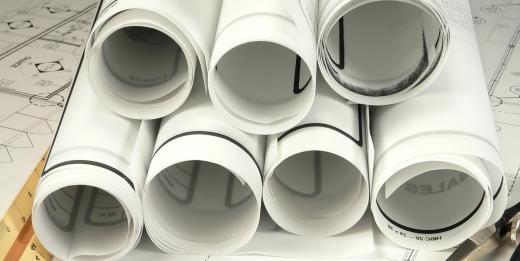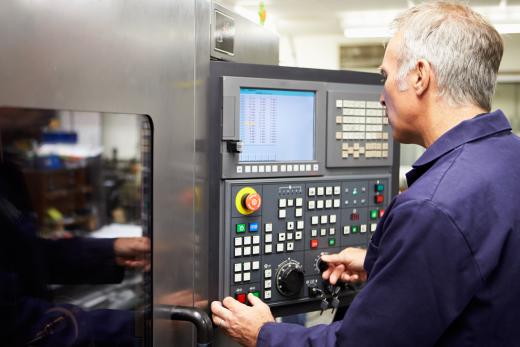Computer numerical control (CNC) lathe programming is the process by which a computer controlled lathe is programmed so as to automate its operation. A programmer inputs instructions according to design parameters, and the machine follows these instructions, quickly and efficiently producing the object. CNC lathe programming has revolutionized many industries and manufacturing operations and generally provides a reduction in costs while increasing productivity over lathes directly operated by humans.
A lathe is a machine that turns a piece of material, called the stock, at high speeds while applying any of a wide variety of cutting tools to produce a desired shape. Lathes have been used for centuries to produce all kinds of things, from baseball bats to camshafts for engines. At one time, lathes were hand operated, but in the early 20th century, the first steps toward automating their operation began with mechanical systems of cams and patterns that could duplicate a part or product from a template or prototype.

The invention of the computer and then microprocessors led to the invention of the CNC lathe. As microprocessors have become cheaper and more powerful, they have made it possible for lathes and other machines to be cheaply and efficiently automated and programmed. Much of this is done with computer aided design (CAD) technology and results in a high degree of repeatable precision in machined parts and products. Many complex and precise operations are possible through CNC lathe programming that were previously impossible to achieve under direct human operation.

Today, many technical schools and universities offer courses or degrees in the field of CNC lathe programming. The work of a CNC lathe programmer often goes hand in hand with CAD design, but these jobs may be performed by different people. Parts and products are designed using a variety of sophisticated design programs, and the specifications are then input by the programmer into a CNC lathe. The machine then performs lathe operations according to these instructions, cutting the stock to specification quickly and efficiently.

CNC lathe programming also allows one machine to quickly change from producing one part or product to another. A programmer may provide the machine with many different sets of specifications and switch between them by simply pressing a few buttons. Many of these machines are of such advanced design that the cutting tools do not need to be changed manually but are changed automatically, by the machine itself, according to its programmed instructions for the manufacture of the desired product.
